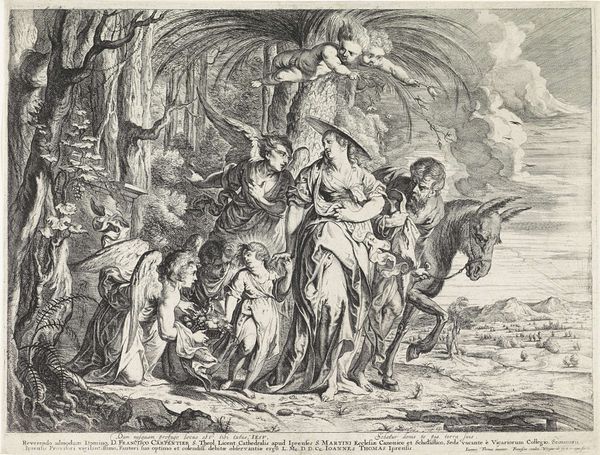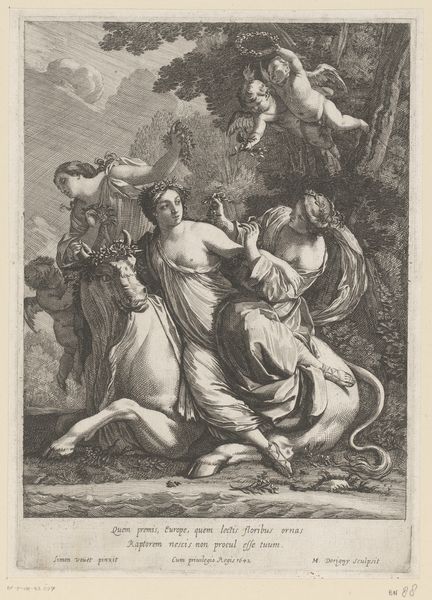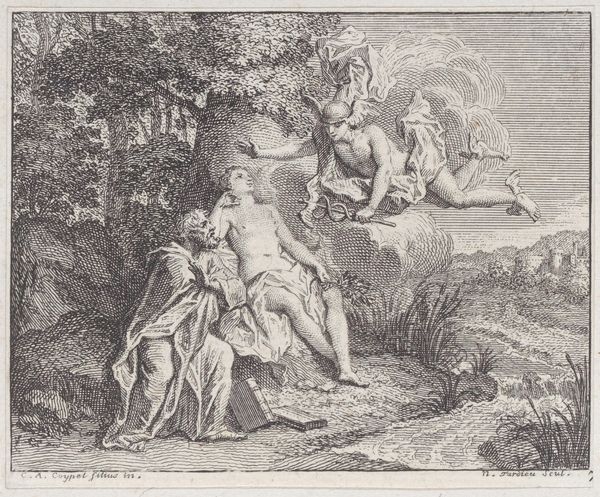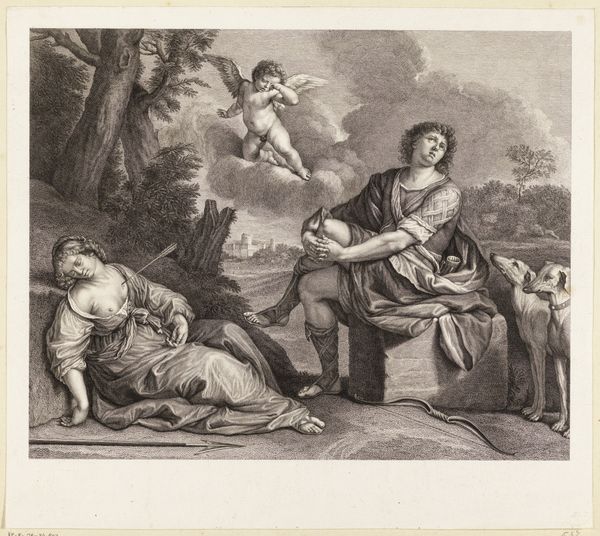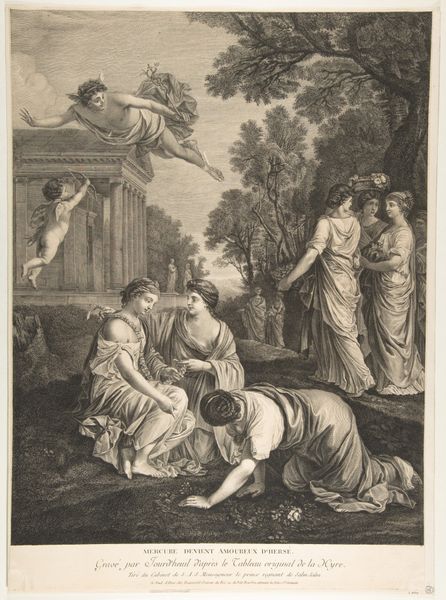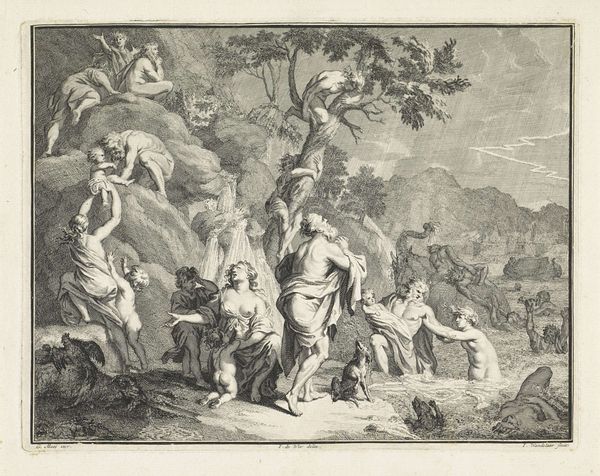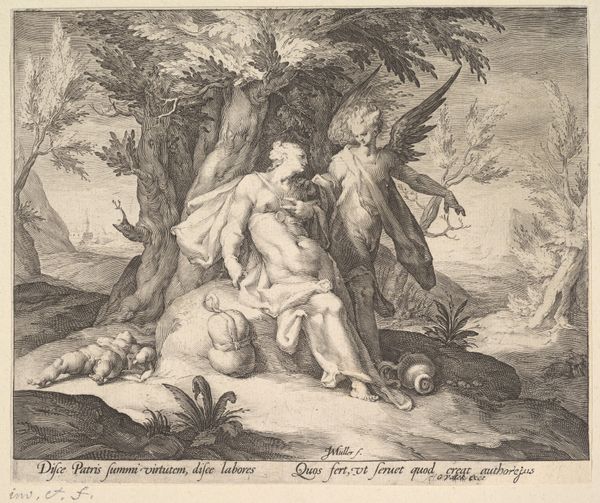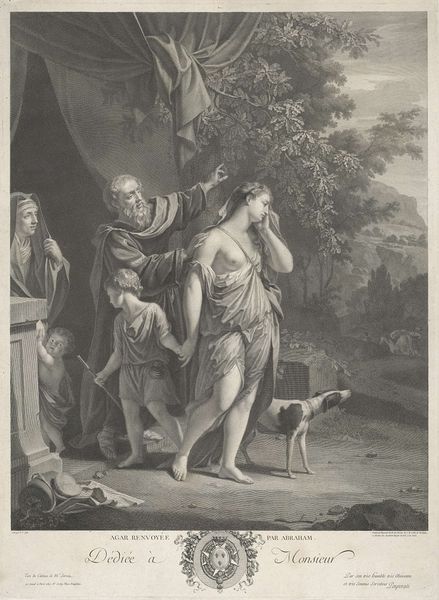
print, engraving
#
allegory
#
baroque
# print
#
landscape
#
figuration
#
history-painting
#
engraving
Dimensions: height 421 mm, width 525 mm
Copyright: Rijks Museum: Open Domain
Fabio Berardi made this print, Hagar and Ishmael in the Desert, in the 18th century. It's made using etching, a printmaking process where lines are incised into a metal plate with acid, which then holds ink and transfers the image to paper. The technique is key to appreciating this work. Berardi uses it to create fine, delicate lines that define forms and build up areas of shading. See how the etched lines give the figures their volume, and add texture to the landscape, conveying the harshness of the desert? Etching was a valued method at the time, prized for its capacity to reproduce detailed images efficiently. Think about the labor involved – not just the artist's skill, but also the work of printers who made multiple impressions available for a wider audience. It's a commercial process, designed for distribution and consumption. Considering the print in terms of materials and production invites us to think about how images circulated and the skilled work involved in their making. This gives us a richer understanding of the print, beyond its status as a representation of a biblical scene.
Comments
No comments
Be the first to comment and join the conversation on the ultimate creative platform.

